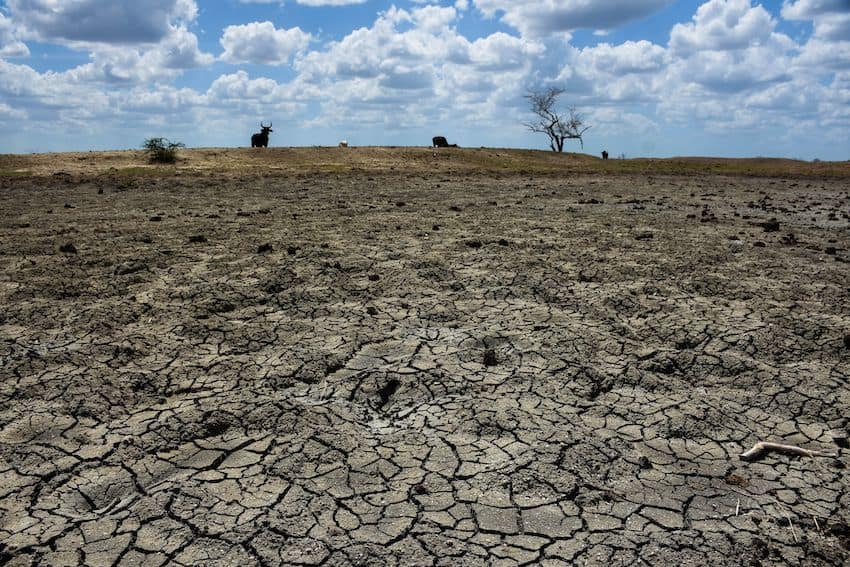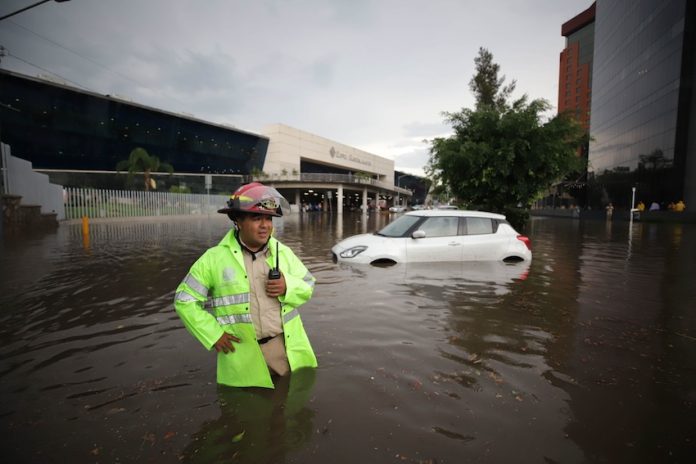Mexico and water often don’t seem to go in the same sentence. Remember that one time when I wrote about how desperate I was (we were) for rainfall?
Friends, Tlaloc is good. He has provided.

A lot.
So much, in fact, that plenty of us have found ourselves with more water than we know what to do with around here. Not coming from our taps, mind you. Just, you know, like in general.
The water crisis is, of course, no joking matter. And for now, we’ve managed to stave off crisis.
I don’t know how things went down in other communities, but in Xalapa, things got bad. There were colonias that went weeks without water during the drought, and regular protests as a result of this frequently shut down major roads. Plants died, and nearby forest fires, unheard of previously, raged. We even had a couple of scary situations where neighboring communities turned off the tap to Xalapa’s supply. Quick negotiations between local civil servants and outside protestors saved the day twice. Thank goodness!
Teetering on the Edge

“We’re one week without water away from total societal collapse,” a friend wrote to me. I keep thinking about those words.
Dramatic, but true. Oof. What would the next steps in the protests have been? Attacks on presumed industrial hoarders of water like Coca-Cola and Nestle? (I actually did side-eye Coca-Cola quite a bit during this time. Suddenly there were no Ciel garrafones in the convenience stores, but magically, pricier-per-milliliter Coke was never not in stock. Ciel is under the Coca-Cola umbrella.)
Thankfully, crisis was averted, right in the nick of time. We’ve now been blessed with a very rainy rainy season this year.
Ironically, this hasn’t meant that things have gotten easier for everyone. For one, lots and lots of places flood these days. The reasons are myriad and very obviously include copious amounts of water falling from the sky in a short time.
Concrete Jungles: Not a Fantastic Strategy

But covering such a great expanse of our communities in concrete certainly hasn’t helped. It’s not just that excess water has nowhere to go so ends up in some of our living rooms rather than our pipes. Aquifers under concrete can’t be replenished too quickly if the water that falls has nowhere to filter through.
I mean, concrete is porous (check out the salitre on our walls), but it’s not that porous. Hence, places like Mexico City are facing the prospect of running out of water in our lifetimes. No bueno.
So, we need to figure out a plan for holding on to all this excess water falling into the city.
Our current plan seems to be insisting on a Goldilocks situation when it comes to water. We can’t have too much, and we can’t have too little.

How’s this working out for us?
Well, not great.
So what can we do?
Other than our part in trying to generally slow down climate change, we need some major infrastructure updates. Sheinbaum says she has a plan, but will it be enough?
Well, we’ll find out. In the meantime, there are people and organizations doing what they can, as well. Some are determined to plant more cloud forests. Others are devising cheap, community-led systems for clean drinking water.
I don’t think we’ll all be heading out with sledgehammers to tear up the concrete any time soon. But leaving the natural areas we have alone would be a great start.
Water catchment systems are another area I hope will become “big business” around here. There seem to be a few smallish organizations out there, but boy do we need more! If the government could subsidize it the way they do electricity, we could really make some headway.
Plus, who doesn’t want to stop depending on municipal water when there’s so much time it’s falling for free all around us? Tandas are for the birds.
The catchphrase in Mexico is Cuida el agua (“take care of the water”), which always makes me imagine people petting it lovingly. If we can get past this water crisis, I will be petting it lovingly! Especially if it’s water that I “caught” and was able to put to use myself.
Sarah DeVries is a writer and translator based in Xalapa, Veracruz. She can be reached through her website, sarahedevries.substack.com.
